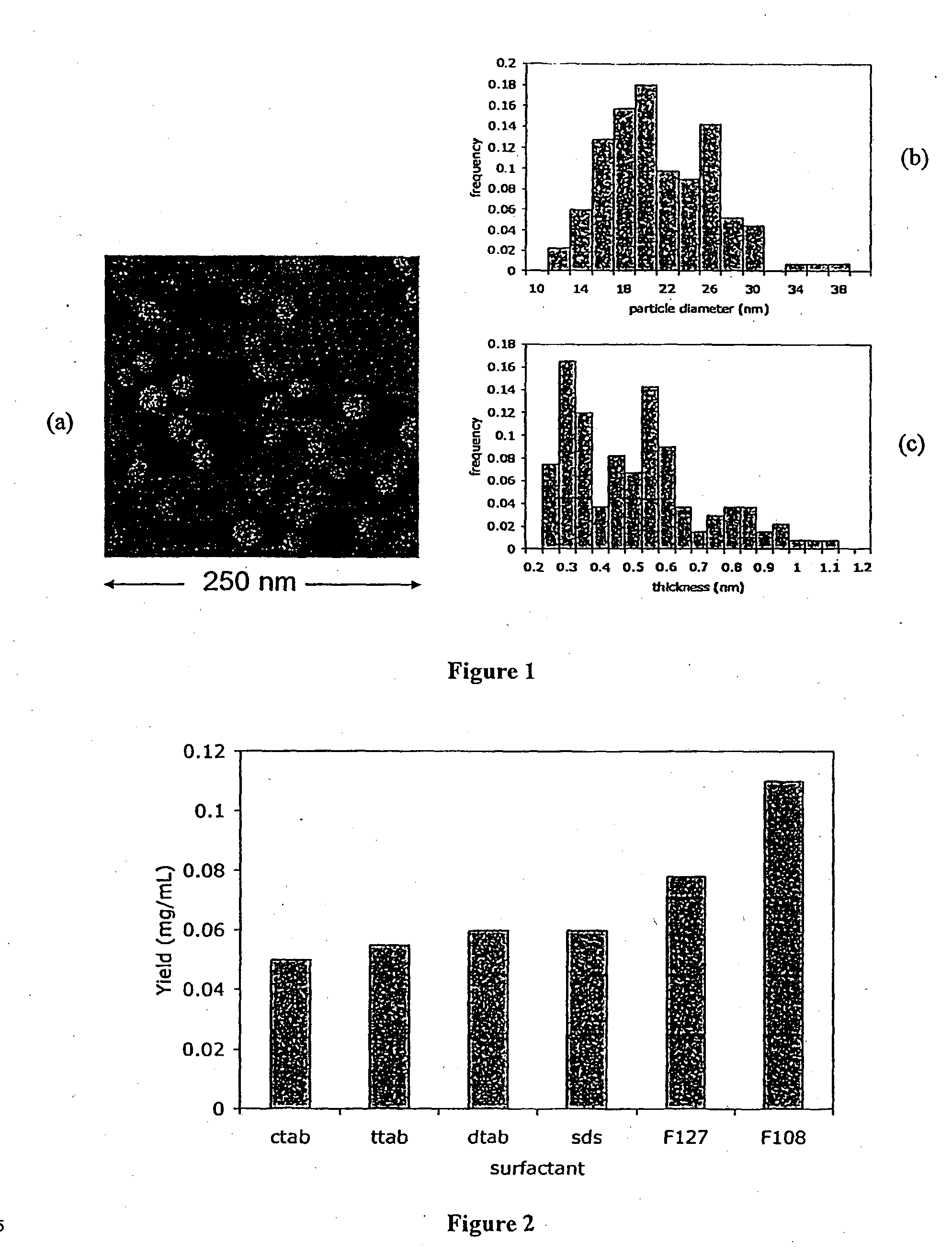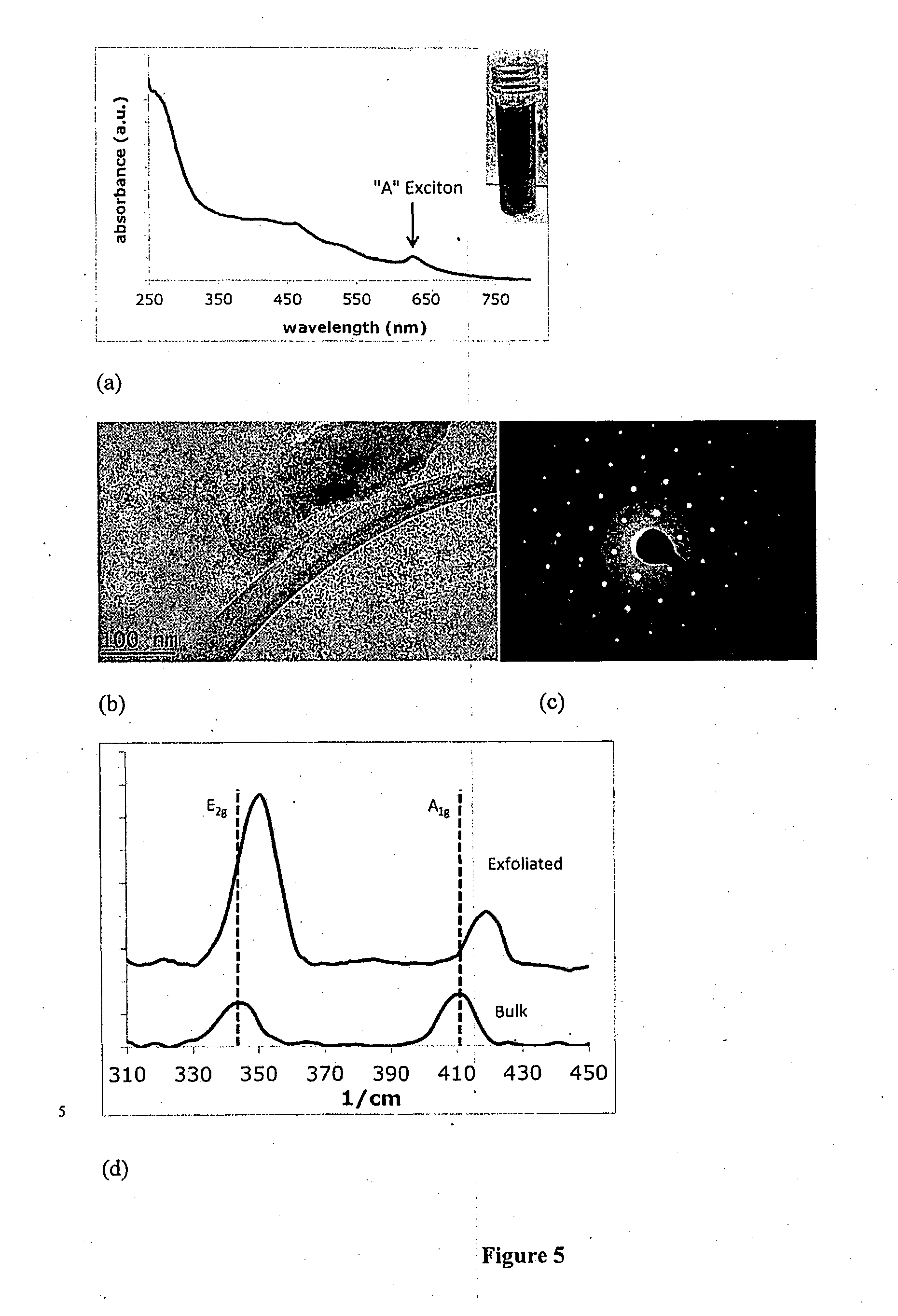Exfoliating Laminar Material by Ultrasonication in Surfactant
a technology of ultrasonication and surfactant, applied in the direction of silicates, silicon compounds, transportation and packaging, etc., can solve the problems of increasing problems, graphene sheets have a strong tendency to aggregate, and limited use of graphene in commercial applications
- Summary
- Abstract
- Description
- Claims
- Application Information
AI Technical Summary
Benefits of technology
Problems solved by technology
Method used
Image
Examples
example 1
Experimental Detail of the Preparation of Highly Concentrated Graphene Suspensions in Water Using Ultrasonic Exfoliation
[0084]Two methods have been employed to produce single and multilayer graphene sheets under aqueous conditions. The first is a batch process where a single addition of surfactant was added prior to the production of graphene using ultrasonic exfoliation. The second method involves the continuous addition of surfactant during the exfoliation process. Both of these methods are detailed below.
Method 1: Batch Process for Graphene Exfoliation
[0085]A range of surfactants have been studied which are suitable for the reduction of the liquid-vapour interfacial tension to the prescribed range of 40-43 mJm−2. These include the cationic surfactants tetradecyltrimethylammonium chloride (TTAB), hexadecyltrimethylammonium chloride (CTAB), the anionic surfactant sodium dodecylsufate (SDS) and ionic surfactants commonly known as poloxamers, which are block co-polymer surfactants (A...
example 2
Production of Aqueous Suspensions of Exfoliated WS2 Particles
[0113]WS2 nanoparticle suspensions were prepared using the surfactant assisted ultrasonic exfoliation technique as previously described. A 2% w / w suspension of bulk WS2 was added to Milli-Q® water. Under continuous sonication at 60 W using a “Cell Disruptor”® Model W-220F (Heat Systems-Ultrasonics Inc.) sonicator, non-ionic surfactant was added from a highly concentrated solution to maintain the concentration of surfactant in water at approximately 0.1% w / w. The exfoliation procedure results in a vast increase in solid-liquid surface area which leads to rapid depletion of the surfactant through adsorption to the particles surface. Thus, continuously adding surfactant during sonication leads to a significantly greater yield of nanoparticulate WS2. This concentration of surfactant is suitable for maintaining the optimum surface tension as described previously at ˜40-42 mJ / m2.
[0114]The resultant exfoliated suspension was then...
PUM
| Property | Measurement | Unit |
|---|---|---|
| surface area | aaaaa | aaaaa |
| boiling point | aaaaa | aaaaa |
| cloud point | aaaaa | aaaaa |
Abstract
Description
Claims
Application Information
 Login to View More
Login to View More - R&D
- Intellectual Property
- Life Sciences
- Materials
- Tech Scout
- Unparalleled Data Quality
- Higher Quality Content
- 60% Fewer Hallucinations
Browse by: Latest US Patents, China's latest patents, Technical Efficacy Thesaurus, Application Domain, Technology Topic, Popular Technical Reports.
© 2025 PatSnap. All rights reserved.Legal|Privacy policy|Modern Slavery Act Transparency Statement|Sitemap|About US| Contact US: help@patsnap.com



